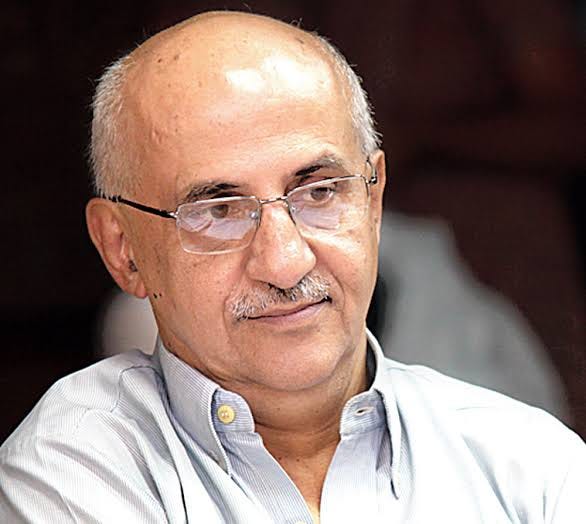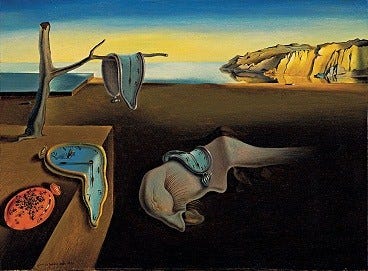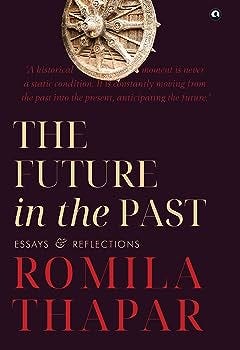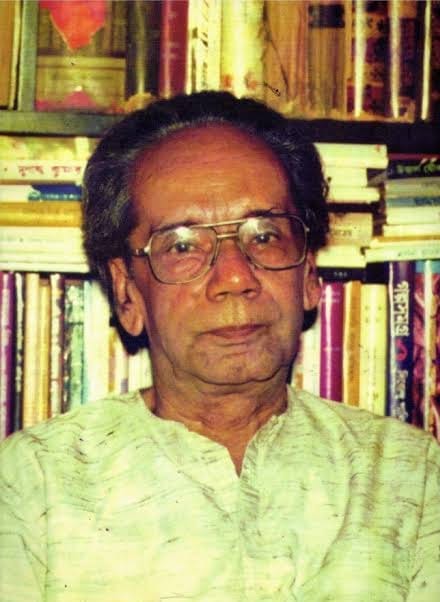What we are thinking about
Wo din gae ki ankhein dariya si behtiyaan thi
Sukha pada hai ab to muddat se ye doaba
(Gone are the days when eyes flooded like a river
This meander is drought-struck for quite some time now…)
As issues ranging from the ongoing violence in Manipur to dreams dreamt in old Delhi make their way into this edition of the Lokayata newsletter, the Study Circle finds itself deeply reflecting on the themes of melancholy and distinctiveness. Following the lead of A.K. Ramanujan, we reconsider the question — is there a distinct Indian way of thinking? Or, are we mere constituents of a much larger constellation of passengers late to the carriage of progress? Literary and philosophical traditions from across the world have variously sought to engage with the question of ‘distinctiveness’ in the ways in which people ponder and question. The Chinese traditions have asked ‘is it human?’; the Greeks questioned ‘is it true?’; the Arabs have troubled themselves with the meter, intention and meaning of thought. Literary traditions of Sanskrit inheritance, on the other hand, have long been concerned with the effects produced by the very act of thinking itself.

If one were to stay true to those various Sanskritic literary traditions, well worked upon by Abhinavagupta and Mammata — one would frequently encounter the linguistic device called metaphor. To the general audience, metaphors have generally lied about the nature of reality. To a more thinking audience, the effect of metaphor has been to distance the act of saying from that of doing. The distinct flavour of the metaphor rests on the fact that it can translate ‘one’ to ‘many’. It is in the very logic of Indian literary traditions, that it enable us to assert that a poem can be about something but it might as well be intending to say something absolutely different. Often, this distinction is intentionally created. Hence, the reader or listener ceases to remain a mere external observer of a text — they become an active participant, a constitutive force, a contributor in their own right.
Narratives of violence, suffering and loss, often absorb the listener into their own sensorial heritage. We should watch out for this occurrence and learn to empathize while intentionally trying to maintain a distinct location and position. The listener should be aware of the narratives that exist outside their zones of comfort — yet, they should remain wary of becoming unconsciously complicit. The melancholy of violence and suffering in a particular space does not only have a context, but also produces far-reaching consequences. As ruminated by Prof. Shamsur Rehman Farooqui, we must also situate the narratives of violence within the very effects they foretell.
What we are reading and looking forward to read
In this interview, peace activist Harsh Mander provides a chilling account of the ethnic violence that has engulfed the Indian state of Manipur. On May 3, 2023, ethnic violence erupted after the Kukis — Christian minorities —protested against the inclusion of the Meitei community — Vaishnavite Hindus — in the Scheduled Tribes’ list. So far, this crisis has claimed 182 lives. The carnage is yet to come to a halt: people continue to be beaten, killed, burnt and raped. While Manipur was experiencing a civil war in every sense of the term, the country’s Prime Minister, as is his won’t, chose to maintain a criminal silence. Much like the Emperor Nero, he refused to comment after a video surfaced on the internet that showed Kuki women being paraded naked and sexually assaulted. Indeed, as Harsh Mander puts it, it would be inappropriate to apportion blame solely to one community and absolve the other. The state bears absolute culpability. The Kuki community feels that the state has not acted with fairness and has overwhelmingly favoured the Meitei community. Biren Singh, the chief minister of Manipur and himself a Meitei, has exacerbated the crisis through his vitriolic stigmatization of the Kuki community. Mander draws parallels between the ethnic violence in Manipur and the Gujarat riots of 2002. In both cases, the government turned a blind eye to the violence — the only difference being that the weaponry used in Gujarat pales in comparison to the more advanced weaponry being utilised in Manipur.
“Death is a lossy process, but something always remains.”
In this playful short essay, Paul Ford recounts his experience of compiling a digital archive of his father’s experimental literature. His father, Frank, who died at a ripe age of 90, wished that all his writings — flash poems, essays, short plays, memoirs — be uploaded on the Internet Archive. The author describes the painstaking process of producing this huge compilation, gobbling up 7 GB of space on the cloud, as an unusual process of archiving which he thoroughly enjoyed. His work was made easier by the sorting and coding tools on his computer and bourbon. His self-indulgence was a result of his desire to keep his father and his works alive for posterity — even if there aren’t many who might actually read them. However, reading this piece provoked an interesting but obvious realization — it is important to document our times, even if we feel that it might catch the eyes of no one — someone might stumble across them, in some obscure corner of the internet and make meaning, years later.
We look forward to reading The Bloomsbury Handbook of Postcolonial Print Cultures edited by Toral Jatin Gajarawala, Neelam Srivastava, Rajeswari Sunder Rajan and Jack Webb, and The Future in the Past: Essays and Reflections by Romila Thapar.
What we are listening to and watching
This month, we watched Ghode Ko Jalebi Khilane Le Ja Riya Hoon (Taking the Horse to eat Jalebis) — a 2018 film directed by Anamika Haksar. Set in the streets and alleys of Old Delhi, it portrays its poorest inhabitants as they make their way through their daily lives. The film makes no bones about representing the abject nature of these lives — such as, when it depicts a day-labourer being verbally abused by his employer or when a rag-picker squatting in a landfill tells her companion how she does not even have the bare minimum to buy herself a decent set of clothes for Eid. Yet, as we learn from the very first scene, this is a film not so much about these people’s sufferings as about their dreams. These are, quite literally, dreams — which they have in their sleep. Haksar employs a complex visual form, in which animated images are superimposed upon camera footage so that gritty material surroundings are interwoven within extravagant dreamscapes bringing out the dreamlike quality that waking life itself sometimes possesses. The film follows a group of idiosyncratic characters, chief among them the romantic Patru — pickpocket by day and trumpeteer in a wedding band by night. Patru’s character should be seen less as a ‘protagonist’ than as one of the lenses of a prism, through which we view life being inhabited in a particular setting amidst its various sensations. The value of the film lies in the radical aesthetic experience that it provides — exploring as it does, the rhythms of working people’s lives and making them central to the sensory experience of a place. Even as it parodies the touristy romanticism associated with aspects of Shahjahanabad, it offers its own poetic picture of the old city. Ghode Ko Jalebi Khilane Le Ja Riya Hoon is available for rent online and can be watched here.
On 15th February, 2013, Centre for Developing Societies had organized a panel discussion on The Peasant Then and Now: Thirty Years of Ranajit Guha’s ‘Elementary Aspects’. The panel included stalwarts of the Subaltern Studies Group — Dipesh Chakrabarty, Gayatri Chakravarty Spivak and Shahid Amin. The publication of the book Elementary Aspects of Peasant Insurgency in Colonial India in the wake of the inauguration of the Subaltern Studies project was a milestone that James Scott had admirably phrased as ‘the Guha dock, the shipyard’. Guha writes as an Indian, not in the Indic sense of the term, but as a cosmopolitan historian. He cuts the ‘I’ and the ‘We’, and takes on the helm with ‘Our’. The five broad concerns taken up by this commemorative panel included Globalization and insurgency, market-in-land (where both dominance and hegemony are vying with each other for the consent of the governed) and demographic change, transformation of territoriality and solidarity, increasing communal polarisation within the peasantry, the evolving nature of state-sponsored violence (Operation Green Hunt) and finally, the changing implications of the ‘religious’ and the ‘political’.
What’s cooking in the Study Circle
One of the last sentinels from the golden era of Bengali literature, Syed Mustafa Siraj wrote effortlessly for both children and adults. His sheer versatility enabled him to craft riveting novels like ‘Neel Ghorer Nati’ and conjure the evergreen ornithologist-cum-investigator Colonel Niladri Sarkar. Renowned for his nuanced social commentary and vivid dissection of the relationship between man and nature, Siraj was awarded the Sahitya Akademi Puraskar for his magnum opus ‘Aleek Manush’ (The Mythical Man). A bohemian boy from rural Murshidabad who set out to be a musician, he ended up carving a place for himself in the fraternity of luminaries like Sunil Gangopadhyay and Shirshendu Mukhopadhyay. He passed away in 2012. Despite being widely acclaimed, many of his works remain untranslated till date.
‘Bharat Varsha’ is one of his less celebrated but extremely powerful short stories. It found its place in the Bangla textbook meant for the students of the West Bengal Council for Higher Secondary Education at a time when communal serpents had raised their fangs through the cracks in our socio-political system. At present, our nation fundamentally stands divided, bringing back the disturbing memories of the early 1990s. In these dire times, ‘Bharat Varsha’ shines as a beacon of protest against communalism. In a lucid language, striking enough to pierce the hearts of students, Siraj paints what India ‘is’ and what it ‘should be’ with unabashed candour.
Read this poignant short story translated by Saukarya Samad on the Lokayata blog. In our reading session this month, we discussed Prabir Purkayastha’s incisive essay called ‘Media in the Digital Age’. A copy of it can be downloaded from here. Our project to translate and critically annotate Rahul Sankrityayan’s collection of essays Dimagi Gulami has completed its first phase. We now have a complete manuscript that requires a bit more editing to bring about uniformity in style and convention. We are envisioning a book of about 150 pages — including at least two appendices, a comprehensive editors’ note, and a scholarly preface or introduction. Watch this space for an announcement regarding our publisher as and when we finalise our talks with them. Meanwhile you can now explore our YouTube channel complete with videos of the lecture series (featuring K. Hemlata, Vandana Shiva, Namita Waikar, and Madhura Swaminathan) that we had hosted online during the height of the pandemic in 2020, and recordings of the first and second Satyam Jha Memorial Lectures by Professors Marcus Redikar and Akeel Bilgrami respectively.
As decided in our half-yearly review meeting held online on August 4th, we have decided to invite applications for the membership of the Study Circle. If you are interested, or know someone who might be, apply/tell them to apply by 12 PM IST on the 15th of September latest. We strongly encourage applications from undergraduates, women, and gender-minority individuals. Fill up this Google form containing all the details to apply. Feel free to reach out to us if you have any queries.
Who we are remembering

This month, we are remembering Toni Morrison, the first African-American woman to win the Nobel Prize in Literature. Renowned for her conscientious documentation of the plight of the blacks in America with an unparalleled prosaic eloquence in works such as The Bluest Eye, and Beloved and Song of Solomon, she passed away on the 5th of August, 2019, at the age of 88. We leave you with her — discussing civil rights and gentrification, in Love, the novel.
That’s all from us for now. Let us know what you thought about this newsletter in comments or over email.






